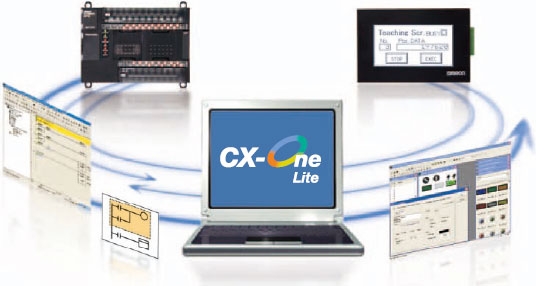1. EXECUTIVE SUMMARY
- CVSS v3 7.8
- ATTENTION: Low skill level to exploit
- Vendor: Omron
- Equipment: CX-One
- Vulnerabilities: Untrusted Pointer Dereference, Stack-based Buffer Overflow, Type Confusion
2. RISK EVALUATION
Successful exploitation of these vulnerabilities could crash the device being accessed. In addition, a buffer overflow condition may allow remote code execution.
3. TECHNICAL DETAILS
3.1 AFFECTED PRODUCTS
The following versions of CX-One, an Automation Software Suite, are affected:
- CX-One Versions 4.60 and prior, including the following applications:
- CX-Protocol Versions 2.02 and prior
- CX-Server Versions 5.0.28 and prior
- CX-Position Versions 2.52 and prior
3.2 VULNERABILITY OVERVIEW
3.2.1 UNTRUSTED POINTER DEREFERENCE CWE-822
The affected product may allow an attacker to supply a pointer to arbitrary memory locations, which may allow an attacker to remotely execute arbitrary code.
CVE-2020-27259 has been assigned to this vulnerability. A CVSS v3 base score of 6.6 has been calculated; the CVSS vector string is (AV:L/AC:L/PR:N/UI:R/S:U/C:L/I:H/A:L).
3.2.2 STACK-BASED BUFFER OVERFLOW CWE-121
The affected product is vulnerable to a stack-based buffer overflow, which may allow an attacker to remotely execute arbitrary code.
CVE-2020-27261 has been assigned to this vulnerability. A CVSS v3 base score of 7.8 has been calculated; the CVSS vector string is (AV:L/AC:L/PR:N/UI:R/S:U/C:H/I:H/A:H).
3.2.3 ACCESS OF RESOURCE USING INCOMPATIBLE TYPE (‘TYPE CONFUSION’) CWE-843
This vulnerability allows local attackers to execute arbitrary code due to the lack of proper validation of user-supplied data, which can result in a type-confusion condition.
CVE-2020-27257 has been assigned to this vulnerability. A CVSS v3 base score of 6.6 has been calculated; the CVSS vector string is (AV:L/AC:L/PR:N/UI:R/S:U/C:L/I:H/A:L).
3.3 BACKGROUND
- CRITICAL INFRASTRUCTURE SECTORS: Critical Manufacturing
- COUNTRIES/AREAS DEPLOYED: Worldwide
- COMPANY HEADQUARTERS LOCATION: Japan
3.4 RESEARCHER
rgod, working with Trend Micro’s Zero Day Initiative, reported these vulnerabilities to CISA.
4. MITIGATIONS
Omron has released an updated version of CX-One to address the reported vulnerabilities. These releases are available through the CX-One auto-update service and are as follows:
- CX-Protocol Version 2.03
- CX-Server Version 5.0.29
- CX-Position Version 2.53
CISA recommends users take the following measures to protect themselves from social engineering attacks:
- Do not click web links or open unsolicited attachments in email messages.
- Refer to Recognizing and Avoiding Email Scams for more information on avoiding email scams.
- Refer to Avoiding Social Engineering and Phishing Attacks for more information on social engineering attacks.
CISA reminds organizations to perform proper impact analysis and risk assessment prior to deploying defensive measures.
CISA also provides a section for control systems security recommended practices on the ICS webpage on us-cert.cisa.gov. Several recommended practices are available for reading and download, including Improving Industrial Control Systems Cybersecurity with Defense-in-Depth Strategies.
Additional mitigation guidance and recommended practices are publicly available on the ICS webpage on us-cert.cisa.gov in the Technical Information Paper, ICS-TIP-12-146-01B–Targeted Cyber Intrusion Detection and Mitigation Strategies.
Organizations observing any suspected malicious activity should follow their established internal procedures and report their findings to CISA for tracking and correlation against other incidents.
No known public exploits specifically target these vulnerabilities. These vulnerabilities are not exploitable remotely.
Source:
